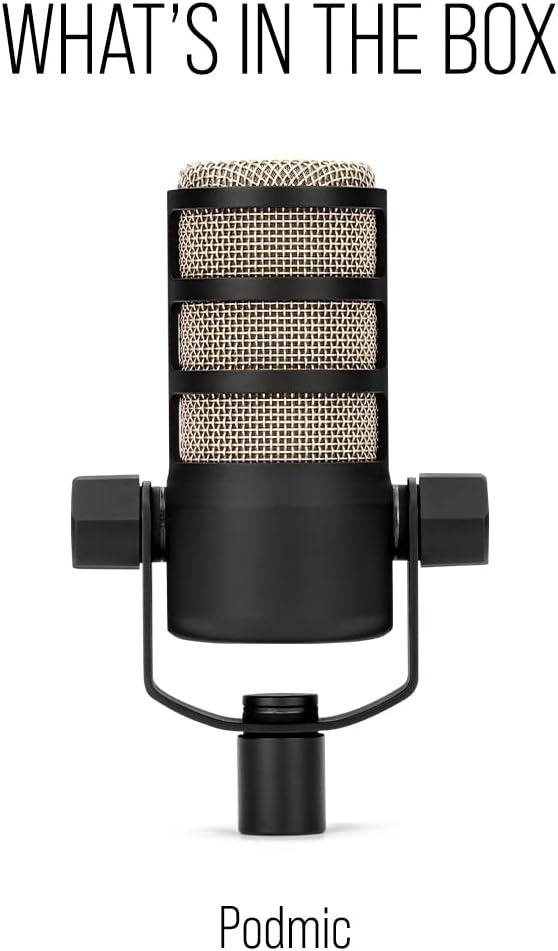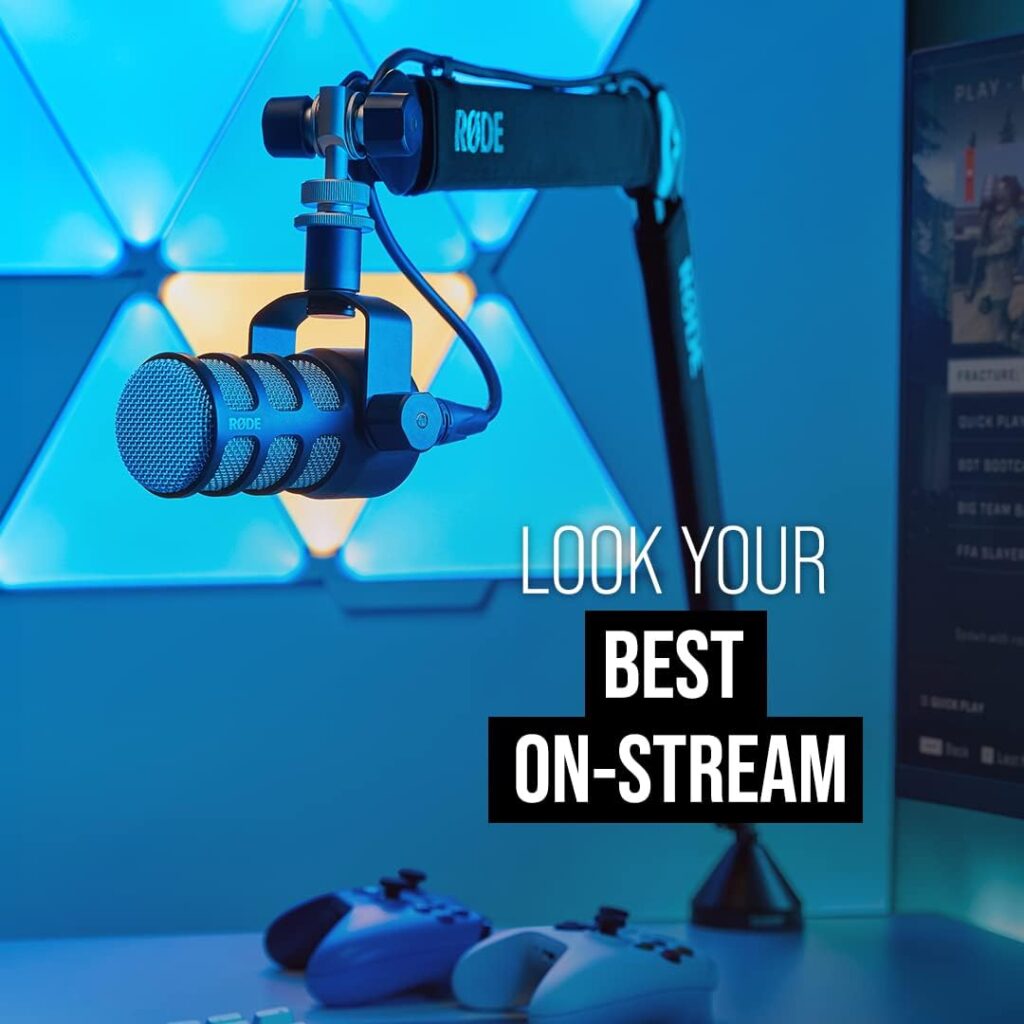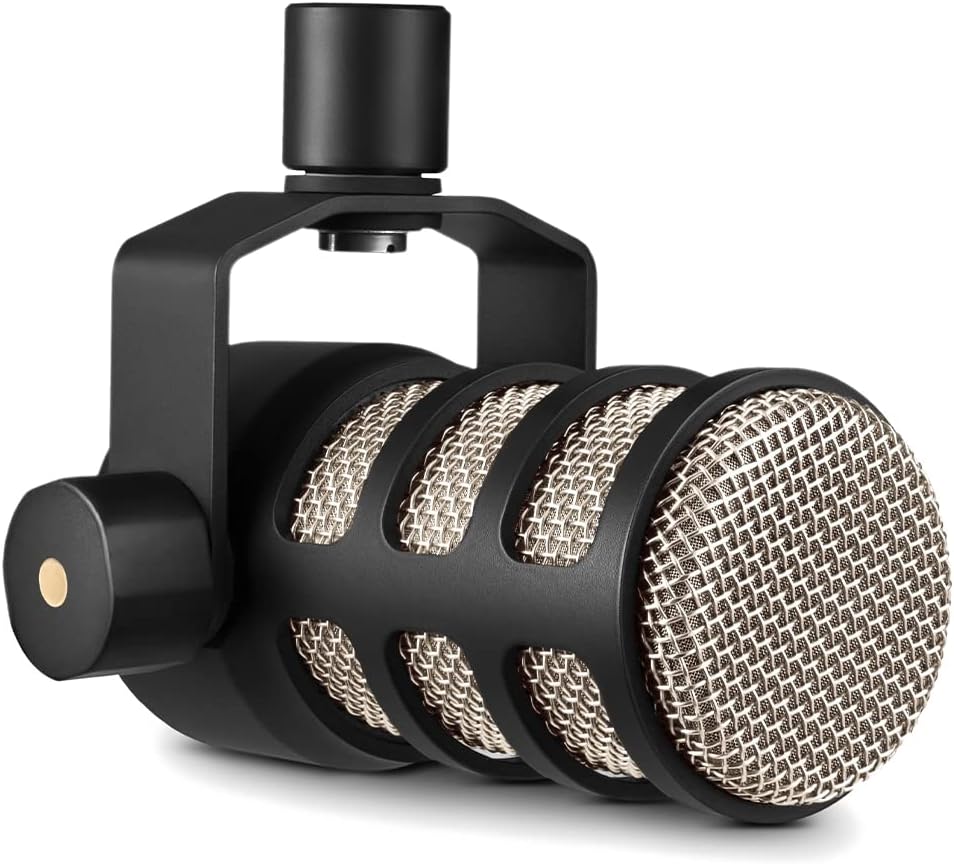Rode Podmic Review
The world of podcasting has exploded in recent years, and with it, the demand for high-quality, affordable audio equipment has skyrocketed. Enter the Rode PodMic, a dynamic microphone designed specifically for podcasters, streamers, and content creators looking for professional-grade sound without breaking the bank. Priced at just $99 USD, the Rode PodMic has earned a reputation as one of the best value microphones on the market. But does it live up to the hype? In this review, we’ll dive deep into the Rode PodMic’s design, sound quality, features, pros and cons, and how it stacks up against the competition. Plus, we’ll wrap up with a handy FAQ section to address common questions about this popular mic.
Rode PodMic Review
Released in December 2018 by Australian audio company Rode, the PodMic was designed as a companion to the RodeCaster Pro podcasting console, though it works seamlessly with any XLR-compatible audio interface. This dynamic cardioid microphone is marketed as an entry-level option for podcasters who want broadcast-quality sound at a fraction of the cost of high-end mics like the Shure SM7B or Electro-Voice RE20. With its sleek design, sturdy build, and thoughtful features like an internal pop filter and shock mount, the PodMic promises to deliver exceptional value.
But value isn’t just about price—it’s about performance. So, let’s break down what makes the Rode PodMic tick and whether it’s the right choice for your podcasting setup.
Design and Build Quality
The first thing you notice about the Rode PodMic is its weight. At 937 grams (just over 2 pounds), this compact microphone feels surprisingly hefty for its size. Measuring 6.8 x 2.4 x 4.3 inches (HWD), it’s smaller than many professional broadcast mics, but its all-metal construction gives it a premium, durable feel. The body is made of solid metal, and the stainless steel grille adds both aesthetic appeal and protection for the dynamic capsule inside.
Available in two color options—black with a silver grille or white with a black grille—the PodMic has a retro-modern look that’s reminiscent of classic broadcast microphones like the Electro-Voice RE20. This design isn’t just for show; it’s practical too. The weight ensures stability when mounted, though you’ll need a sturdy stand or boom arm (like the Rode PSA1) to support it without sagging.
The PodMic features an integrated swing mount with a 5/8-inch thread and a 3/8-inch adapter, making it compatible with most stands and boom arms. However, there’s a slight catch: the swing mount doesn’t leave much clearance for the XLR connector at the rear, which can make vertical alignment tricky if you’re using a table stand. It’s a minor design flaw, but one worth noting.
Inside the grille, Rode has included an internal pop filter and shock mount. These features aim to reduce plosives (those pesky “P” and “B” sounds) and handling noise without the need for external accessories. While the packaging is minimal—just the mic and a quick-start guide—it’s clear that Rode prioritized quality where it counts: in the mic itself.
Sound Quality
The heart of any microphone is its sound, and the Rode PodMic delivers a tailored audio experience optimized for spoken word. As a dynamic cardioid microphone, it’s designed to capture sound from the front while rejecting noise from the sides and rear. This tight polar pattern makes it ideal for podcasting in less-than-ideal environments, like home offices or living rooms with background noise.
The frequency response spans 20 Hz to 20 kHz, but it’s not flat like a condenser mic used for music recording. Instead, Rode has tuned the PodMic with a pre-tweaked EQ curve suited for broadcast applications:
- A high-pass filter reduces low-end rumble (50-70 Hz).
- A subtle warmth peak (100-150 Hz) adds depth to the voice.
- A bump around 800 Hz enhances clarity for lyrics or speech.
- A presence peak (5-6 kHz) boosts vocal intelligibility.
- A touch of air (9-13 kHz) gives it a bright, modern sound.
Out of the box, the PodMic produces a rich, warm tone with a slight emphasis on the low-mids and highs. It’s not as full-bodied as the Shure SM7B or as naturally warm as the RE20, but for $99, it punches well above its weight. The sound is clean and broadcast-ready, requiring minimal EQ adjustments for most voices.
However, the PodMic does have a relatively low output compared to some dynamic mics, meaning it needs a decent amount of gain—typically 50-60 dB—to achieve optimal levels. Pairing it with a quality preamp or audio interface (like the Focusrite Scarlett or Rode AI-1) is recommended to get the best performance. With the right setup, the PodMic captures every nuance of your voice with impressive clarity, making it a fantastic choice for podcasters, streamers, and voice-over artists.
In testing, the internal pop filter performed admirably, minimizing plosives even during close-up recording (1-3 inches from the mic). That said, in situations with exaggerated “P” sounds or poor mic technique, a slight pop might sneak through. Adding an external pop filter (like the Rode WS2) can eliminate this entirely, though it’s not strictly necessary for most users. The internal shock mount also does a solid job of reducing handling noise, though it’s not as immune as higher-end mics like the SM7B.
Features and Functionality
The Rode PodMic keeps things simple, which is both a strength and a limitation. It’s an XLR-only microphone, meaning you’ll need an audio interface or mixer to connect it to your computer—no USB option here (unless you opt for the newer Rode PodMic USB variant, which we’ll touch on later). This analog design aligns with professional recording setups, offering flexibility and compatibility with a wide range of gear.
Key features include:
- Dynamic Capsule: Less sensitive than condenser mics, making it great for noisy environments.
- Cardioid Polar Pattern: Focuses on the speaker while rejecting off-axis sound.
- Internal Pop Filter: Reduces plosives without additional accessories.
- Internal Shock Mount: Minimizes vibrations and handling noise.
- Integrated Swing Mount: Allows for easy positioning on stands or boom arms.
There are no onboard controls—no gain knob, headphone jack, or mute button. This no-frills approach keeps the price low and the design streamlined, but it means you’ll rely on your audio interface for adjustments. For podcasters already invested in an XLR setup, this is a non-issue. For beginners, it’s an extra cost to consider.
Pros and Cons
Pros
- Affordable Price: At $99, it’s a steal for the quality.
- Excellent Sound: Broadcast-ready audio with minimal tweaking.
- Durable Build: All-metal construction feels premium and rugged.
- Noise Rejection: Tight cardioid pattern excels in untreated spaces.
- Built-in Features: Pop filter and shock mount reduce the need for extras.
Cons
- XLR Only: Requires an audio interface, adding to the total cost.
- Low Output: Needs significant gain, which may strain budget interfaces.
- No Accessories: Lacks a stand, cable, or external pop filter in the box.
- Swing Mount Clearance: Limited space for XLR connectors in some setups.
Rode PodMic vs. Shure SM7B
The Shure SM7B ($399) is the gold standard for podcasting and broadcasting, offering a fuller, warmer sound and superior noise rejection. However, it’s four times the price of the PodMic and requires even more gain. For budget-conscious creators, the PodMic delivers 80% of the SM7B’s quality at a quarter of the cost.
Rode PodMic vs. Audio-Technica ATR2100x-USB
The ATR2100x-USB ($99) is a hybrid mic with both USB and XLR connectivity, making it more versatile for beginners. It’s lighter and less durable than the PodMic, and its sound is less refined, but the plug-and-play USB option is a big plus if you don’t have an interface.
Rode PodMic vs. Rode PodMic USB
The newer Rode PodMic USB ($199) builds on the original with USB-C connectivity, onboard DSP, and a headphone jack. It’s twice the price but offers greater flexibility for those who want both XLR and USB options. The original PodMic remains the better value if you’re already set up with an XLR interface.
FAQ Section
1. What is the Rode PodMic best used for?
The Rode PodMic is optimized for podcasting, streaming, and voice-over work. Its dynamic capsule and cardioid pattern make it ideal for spoken word in home studios or untreated spaces.
2. Does the Rode PodMic need phantom power?
No, the PodMic is a dynamic microphone and doesn’t require 48V phantom power. It works with any XLR-compatible audio interface or mixer.
3. Can I use the Rode PodMic without an audio interface?
No, the standard PodMic is XLR-only. You’ll need an audio interface or mixer to connect it to your computer. The Rode PodMic USB, however, offers a USB-C option.
4. How much gain does the Rode PodMic need?
The PodMic has a sensitivity of -57 dB (1.60mV @ 94 dB SPL), requiring around 50-60 dB of gain for optimal levels. A quality preamp or interface is recommended.
5. Is the internal pop filter enough, or do I need an external one?
The built-in pop filter handles most plosives well, especially with good mic technique (1-3 inches away). For extra protection or close-up recording, an external filter like the Rode WS2 can help.
6. How does the Rode PodMic compare to the Shure SM58?
The Shure SM58 ($99) is a versatile stage mic with a brighter, less tailored sound. The PodMic’s frequency response is more broadcast-focused, making it better for podcasting, while the SM58 excels for live performance.
7. Does the Rode PodMic come with a stand or cable?
No, the PodMic includes only the microphone and an integrated swing mount. You’ll need to purchase a stand, boom arm, and XLR cable separately.
8. Can I use the Rode PodMic for music recording?
While it can capture vocals or instruments, the PodMic’s tailored response is designed for speech, not music. Condenser mics or other dynamic options (like the SM7B) are better for musical applications.
9. Is the Rode PodMic worth the price?
Absolutely. For $99, it offers professional-grade sound, durability, and features that rival mics costing much more, making it a top choice for budget-conscious creators.
10. Where can I buy the Rode PodMic?
The PodMic is available at major retailers like Amazon, Sweetwater, B&H Photo, and directly from Rode’s website, typically priced at $99 USD.
Final Thoughts
The Rode PodMic proves that you don’t need to spend hundreds of dollars to get great audio. Its combination of thoughtful design, solid build quality, and tuned sound makes it a go-to for podcasters at any level. If you’re ready to elevate your recordings without breaking the bank, the Rode PodMic is a worthy investment. Happy podcasting!




